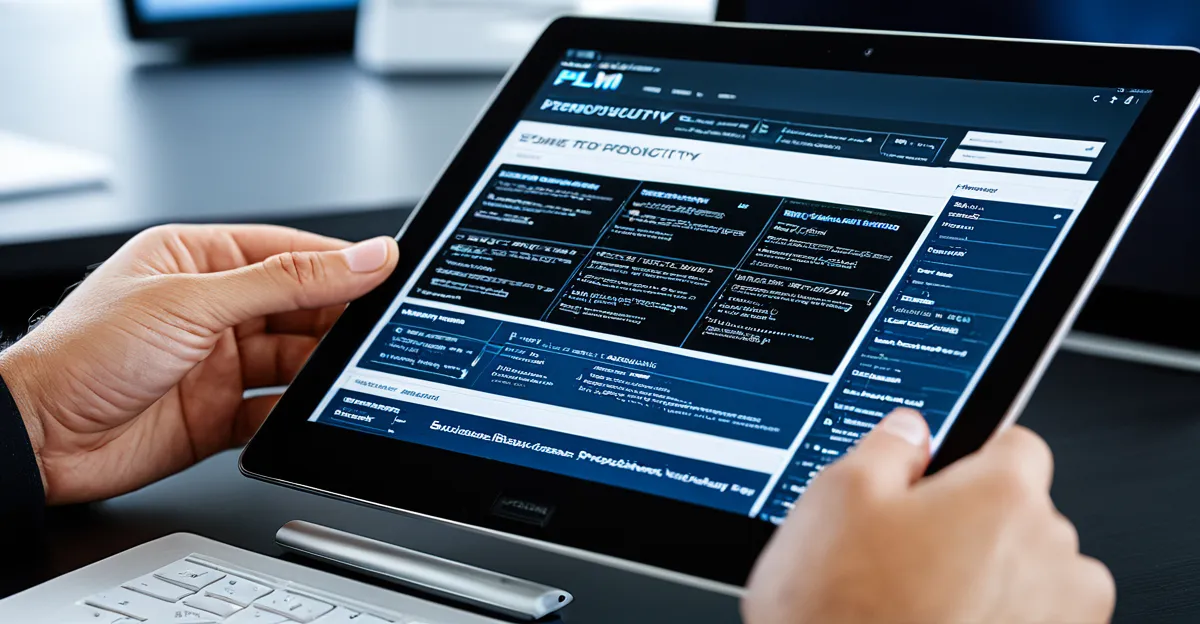Selecting the right PLM software can transform product development from disjointed tasks into a streamlined process that drives innovation and reduces costs. Understanding key features, integration possibilities, and industry fit helps businesses leverage real-time data for faster decisions and improved quality. This guide breaks down essential insights to empower you to choose a solution that truly unlocks efficiency across your entire product lifecycle.
Core Functions and Advantages of Product Lifecycle Management (PLM) Software
Product Lifecycle Management (PLM) software serves as the backbone for managing every phase of a product’s existence—from conception and design through manufacturing, servicing, and ultimately, retirement. By unifying workflow and centralizing product information, PLM creates a single source of truth for data, eliminating duplication, confusion, and error-prone manual steps. This foundational role enables teams to work collaboratively, using live data and secure version control, so every stakeholder—from engineering to supply chain—works from accurate, up-to-date information.
Also read : What role does AI play in the UK’s high-tech computing landscape?
A modern PLM system incorporates essential features such as real-time data integration with CAD and CAM platforms, automated workflow management, rigorous Bill of Materials (BOM) oversight, and robust change and configuration management. These tools empower engineering and manufacturing teams to operate with full visibility, enabling agile product development and fostering consistent regulatory compliance through secure, auditable documentation.
Implementing sophisticated PLM solutions leads to tangible benefits: companies innovate faster, reach the market sooner, and reduce costs by automating routine tasks and minimizing errors during product release. Enhanced collaboration and concurrent engineering elevate product quality, while digital thread and digital twin capabilities support data-driven decisions, sustainability, and business resilience. You can view more details on this page: Check it out now.
In the same genre : Maximize efficiency: top tips for choosing plm software
Leading PLM Software Platforms and Industry Comparisons
PLM software comparison is essential for identifying the right platform to manage the entire product lifecycle. Industry leaders such as Siemens, Dassault Systèmes, Autodesk, SAP, Oracle, PTC, and Microsoft each deliver robust solutions. Siemens lifecycle software features stand out in digital manufacturing and supply chain collaboration, while Windchill product lifecycle tools emphasize integration, scalability, and agile product lifecycle practices. The Teamcenter product data platform is known for its advanced engineering collaboration tools and centralized product information management.
Industry-specific lifecycle software enables manufacturers, medical device makers, electronics producers, and apparel brands to address unique compliance and process requirements. For example, PLM for medical devices includes rigorous regulatory compliance tracking and end-to-end product traceability. Lifecycle software for apparel streamlines creative workflows, material management, and rapid new product introduction.
Deployment options—cloud vs on-premise—remain central in PLM software comparison. Cloud based lifecycle management now provides easier scalability, IT cost reduction, and global access, supporting real-time collaboration features and workflow automation in product development.
As digital twin support and IoT integration become standard, platforms such as Windchill product lifecycle tools and Siemens lifecycle software features lead digital transformation trends in product lifecycle optimization. Open source lifecycle management is emerging for organizations seeking customization and flexibility in their digital product development environments.
Implementation Strategies and Considerations for Maximizing PLM Value
Applying PLM system implementation strategies starts with strong cross-functional collaboration. Uniting engineering, supply chain, quality, IT, and executive sponsors early lays the foundation for maximizing enterprise PLM system benefits. Initial deployments should synchronize digital product development teams and real-time collaboration features to facilitate communication and eliminate bottlenecks. Integration between lifecycle software and existing CAD integration platforms is essential—direct connections ensure continuous, centralized product information and bill of materials management.
Effective user adoption best practices focus on ongoing education, clear communications, and role-based secure data access and permissions. Successful rollouts involve comprehensive PLM training resources tailored to unique business processes. Change management uses phased engagement, support from internal champions, and agile product lifecycle practices, ensuring continuous feedback and iterative adjustments.
Organizations also gain crucial insights from PLM adoption case studies. For instance, digital transformation in product development is most successful when scalability of lifecycle platforms is prioritized. Lessons from case studies show that lifecycle workflow management must be adaptive to business growth, while lifecycle system customization accommodates complex regulatory compliance tracking and version control and revision management.
Well-architected integration between PLM and ERP systems enhances data visibility, supporting informed decisions and robust business continuity. Ultimately, aligning PLM software with secure enterprise data governance elevates collaboration and business outcomes throughout the entire product lifecycle.





